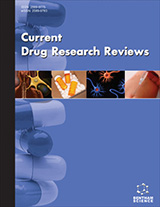
Abstract
Flavonoids are a family of secondary metabolites found in plants and fungi that exhibit strong antioxidant properties and low toxicity, making them potential candidates for medicinal use. Quercetin, a flavonoid present in various plant-based foods, has gained attention for its numerous biological benefits, including anti-inflammatory, anti-fibrosis, and antioxidant properties. The ocular surface research community has recently focused on quercetin’s therapeutic potential for managing ocular diseases, such as dry eye, keratoconus, corneal inflammation, and neovascularization. In this paper, we discuss the role of quercetin for ocular disease prevention, highlighting its fundamental characteristics, common biological properties, and recent applications. By reviewing the latest research conducted in the last 10 years which was focused on novel herbal formulations for ocular diseases, we aim to provide insights into the role of quercetin in managing ocular diseases and offer perspectives on its potential as a therapeutic agent.
Graphical Abstract
[http://dx.doi.org/10.1016/j.ophtha.2013.05.025] [PMID: 23850093]
[http://dx.doi.org/10.1208/aapsj070479] [PMID: 16594634]
[PMID: 27373107]
[http://dx.doi.org/10.1155/2014/861904] [PMID: 24772038]
[http://dx.doi.org/10.4103/0973-7847.194044] [PMID: 28082789]
[http://dx.doi.org/10.1155/2019/8278454] [PMID: 30728893]
[http://dx.doi.org/10.3390/nu8030167] [PMID: 26999194]
[http://dx.doi.org/10.1016/j.ejmech.2018.06.053] [PMID: 29966915]
[http://dx.doi.org/10.2174/1386207322666190717124507] [PMID: 31573877]
[http://dx.doi.org/10.3390/molecules21010108] [PMID: 26797598]
[http://dx.doi.org/10.1155/2016/2986796]
[http://dx.doi.org/10.1177/1535370216685187] [PMID: 28056553]
[http://dx.doi.org/10.3892/mmr.2013.1846] [PMID: 24337353]
[http://dx.doi.org/10.1016/j.clindermatol.2014.10.006] [PMID: 25704934]
[PMID: 12857017]
[http://dx.doi.org/10.2147/IJN.S285134] [PMID: 33364755]
[http://dx.doi.org/10.1021/acsomega.0c01818] [PMID: 32478277]
[http://dx.doi.org/10.1517/17425247.5.5.567] [PMID: 18491982]
[http://dx.doi.org/10.1208/s12248-010-9183-3] [PMID: 20437123]
[http://dx.doi.org/10.4103/0975-7406.111824] [PMID: 23833523]
[http://dx.doi.org/10.1007/978-3-642-69222-2_2]
[http://dx.doi.org/10.1016/j.addr.2006.07.027] [PMID: 17097758]
[http://dx.doi.org/10.1016/j.tifs.2021.11.032]
[http://dx.doi.org/10.1093/ajcn/81.1.230S] [PMID: 15640486]
[http://dx.doi.org/10.1093/ajcn/62.6.1276] [PMID: 7491892]
[http://dx.doi.org/10.1016/S0003-9861(03)00284-4] [PMID: 12921774]
[http://dx.doi.org/10.1080/10715760100301441] [PMID: 11811545]
[http://dx.doi.org/10.1080/10715760410001728415] [PMID: 15493462]
[http://dx.doi.org/10.1104/pp.126.2.485] [PMID: 11402179]
[http://dx.doi.org/10.1016/S1369-5266(02)00256-X] [PMID: 11960739]
[http://dx.doi.org/10.1111/j.1472-8206.1998.tb00951.x] [PMID: 9646056]
[http://dx.doi.org/10.1016/S1360-1385(97)01018-2]
[http://dx.doi.org/10.1016/S0378-4347(00)00549-1] [PMID: 11334336]
[http://dx.doi.org/10.1139/y2012-101] [PMID: 22873715]
[http://dx.doi.org/10.1016/j.cbi.2005.12.009] [PMID: 16430879]
[http://dx.doi.org/10.1016/0891-5849(96)00129-3] [PMID: 8891673]
[http://dx.doi.org/10.1080/10715760290025951] [PMID: 12150545]
[http://dx.doi.org/10.1016/j.foodchem.2004.02.008]
[http://dx.doi.org/10.1016/j.phrs.2009.10.005] [PMID: 19892018]
[http://dx.doi.org/10.4103/0253-7613.77365] [PMID: 21572657]
[http://dx.doi.org/10.1093/jn/137.10.2190] [PMID: 17884996]
[http://dx.doi.org/10.1002/jnr.21503] [PMID: 17929310]
[http://dx.doi.org/10.1002/eji.200425778] [PMID: 15668926]
[http://dx.doi.org/10.1016/S0014-2999(01)01320-6] [PMID: 11698041]
[http://dx.doi.org/10.1093/rheumatology/kem014] [PMID: 17314215]
[http://dx.doi.org/10.1128/CVI.13.3.319-328.2006] [PMID: 16522772]
[http://dx.doi.org/10.1093/ecam/neq053] [PMID: 21792362]
[http://dx.doi.org/10.1002/jcb.21977] [PMID: 19009557]
[http://dx.doi.org/10.1016/j.gene.2015.12.012] [PMID: 26680104]
[http://dx.doi.org/10.1007/s11033-015-3921-7] [PMID: 26311153]
[http://dx.doi.org/10.1039/D0FO01118E] [PMID: 32725042]
[http://dx.doi.org/10.1093/jn/137.11.2405] [PMID: 17951477]
[http://dx.doi.org/10.1017/S0007114509359127] [PMID: 19402938]
[http://dx.doi.org/10.1038/ijo.2010.272] [PMID: 21224828]
[http://dx.doi.org/10.3945/ajcn.2010.29807] [PMID: 20943792]
[http://dx.doi.org/10.1016/j.ejphar.2010.02.019] [PMID: 20206157]
[http://dx.doi.org/10.1016/j.atherosclerosis.2011.04.023] [PMID: 21601209]
[http://dx.doi.org/10.1136/bjo.83.1.62] [PMID: 10209437]
[http://dx.doi.org/10.3390/nu11051186] [PMID: 31137834]
[http://dx.doi.org/10.1111/nure.12077] [PMID: 24279748]
[http://dx.doi.org/10.3389/fphar.2019.00466] [PMID: 31263410]
[http://dx.doi.org/10.3390/ph13010015] [PMID: 31963166]
[http://dx.doi.org/10.1016/S0140-6736(17)30544-5] [PMID: 28242111]
[http://dx.doi.org/10.1016/j.exer.2004.12.007] [PMID: 15862178]
[http://dx.doi.org/10.1016/j.exer.2016.01.012] [PMID: 26808488]
[http://dx.doi.org/10.1248/cpb.50.788] [PMID: 12045333]
[http://dx.doi.org/10.1001/jama.2014.3192] [PMID: 24825645]
[http://dx.doi.org/10.2174/1874364101004010052] [PMID: 21293732]
[http://dx.doi.org/10.4103/0301-4738.41411] [PMID: 18579986]
[http://dx.doi.org/10.3389/fnins.2019.00672] [PMID: 31293381]
[http://dx.doi.org/10.3389/fnmol.2017.00285] [PMID: 28936163]
[http://dx.doi.org/10.1016/j.jtos.2017.05.003] [PMID: 28736337]
[http://dx.doi.org/10.1016/j.jtos.2017.05.008] [PMID: 28736335]
[http://dx.doi.org/10.1186/s13167-016-0065-3] [PMID: 27413414]
[http://dx.doi.org/10.1016/j.jconrel.2018.10.026] [PMID: 30359668]
[http://dx.doi.org/10.1097/ICU.0000000000000569] [PMID: 30883442]
[http://dx.doi.org/10.1097/ICO.0000000000000543] [PMID: 26203745]
[http://dx.doi.org/10.1080/09273948.2018.1497664] [PMID: 30096001]
[http://dx.doi.org/10.1016/j.ajo.2006.02.047] [PMID: 16815265]
[http://dx.doi.org/10.1056/NEJMra0905750] [PMID: 20181974]
[http://dx.doi.org/10.1089/thy.2007.0407] [PMID: 18752427]
[http://dx.doi.org/10.3928/1542-8877-19950101-14] [PMID: 7746629]
[http://dx.doi.org/10.1210/er.2002-0020] [PMID: 14671007]
[http://dx.doi.org/10.1167/iovs.12-9646] [PMID: 22871832]
[http://dx.doi.org/10.1111/all.12077] [PMID: 23253152]
[http://dx.doi.org/10.1517/14728210903103818] [PMID: 19708819]
[http://dx.doi.org/10.1159/000058748] [PMID: 10590573]
[http://dx.doi.org/10.1016/j.fct.2019.110924] [PMID: 31672514]
[http://dx.doi.org/10.1167/iovs.15-16595] [PMID: 26066604]
[http://dx.doi.org/10.1002/pbc.21791] [PMID: 18855905]
[http://dx.doi.org/10.1016/S0022-3476(98)70028-9] [PMID: 9544909]
[http://dx.doi.org/10.1136/bjo.2008.150292] [PMID: 19704035]
[http://dx.doi.org/10.1136/bjo.2003.035642] [PMID: 15258028]
[http://dx.doi.org/10.1016/S0140-6736(11)61137-9] [PMID: 22414599]
[http://dx.doi.org/10.1097/01.icu.0000193079.55240.18] [PMID: 16794434]
[http://dx.doi.org/10.1016/j.cca.2010.10.009] [PMID: 20951689]
[http://dx.doi.org/10.1186/s12906-017-2023-6] [PMID: 29237430]
[http://dx.doi.org/10.1038/eye.2013.278] [PMID: 24357835]
[http://dx.doi.org/10.1038/srep09003] [PMID: 25758533]
[http://dx.doi.org/10.1002/cbf.3122] [PMID: 26173740]
[http://dx.doi.org/10.1016/j.biopha.2021.111371] [PMID: 33561647]
[http://dx.doi.org/10.1016/j.preteyeres.2015.07.005] [PMID: 26209346]
[http://dx.doi.org/10.1016/j.preteyeres.2017.08.001] [PMID: 28807717]
[http://dx.doi.org/10.2147/DDDT.S185618] [PMID: 30584279]
[http://dx.doi.org/10.7717/peerj.10136] [PMID: 33150072]
[http://dx.doi.org/10.18043/ncm.78.2.124] [PMID: 28420777]
[http://dx.doi.org/10.1159/000455278] [PMID: 28351046]
[http://dx.doi.org/10.5935/0004-2749.20150026] [PMID: 25945531]
[http://dx.doi.org/10.1016/j.exer.2014.06.009] [PMID: 24952278]
[http://dx.doi.org/10.1136/bjo.87.3.312] [PMID: 12598445]
[http://dx.doi.org/10.1001/archopht.1941.00870100042005] [PMID: 15078675]
[http://dx.doi.org/10.1016/S0002-9394(99)80239-6] [PMID: 17492014]
[http://dx.doi.org/10.1001/archophthalmol.2010.18] [PMID: 20212207]
[PMID: 21425492]
























